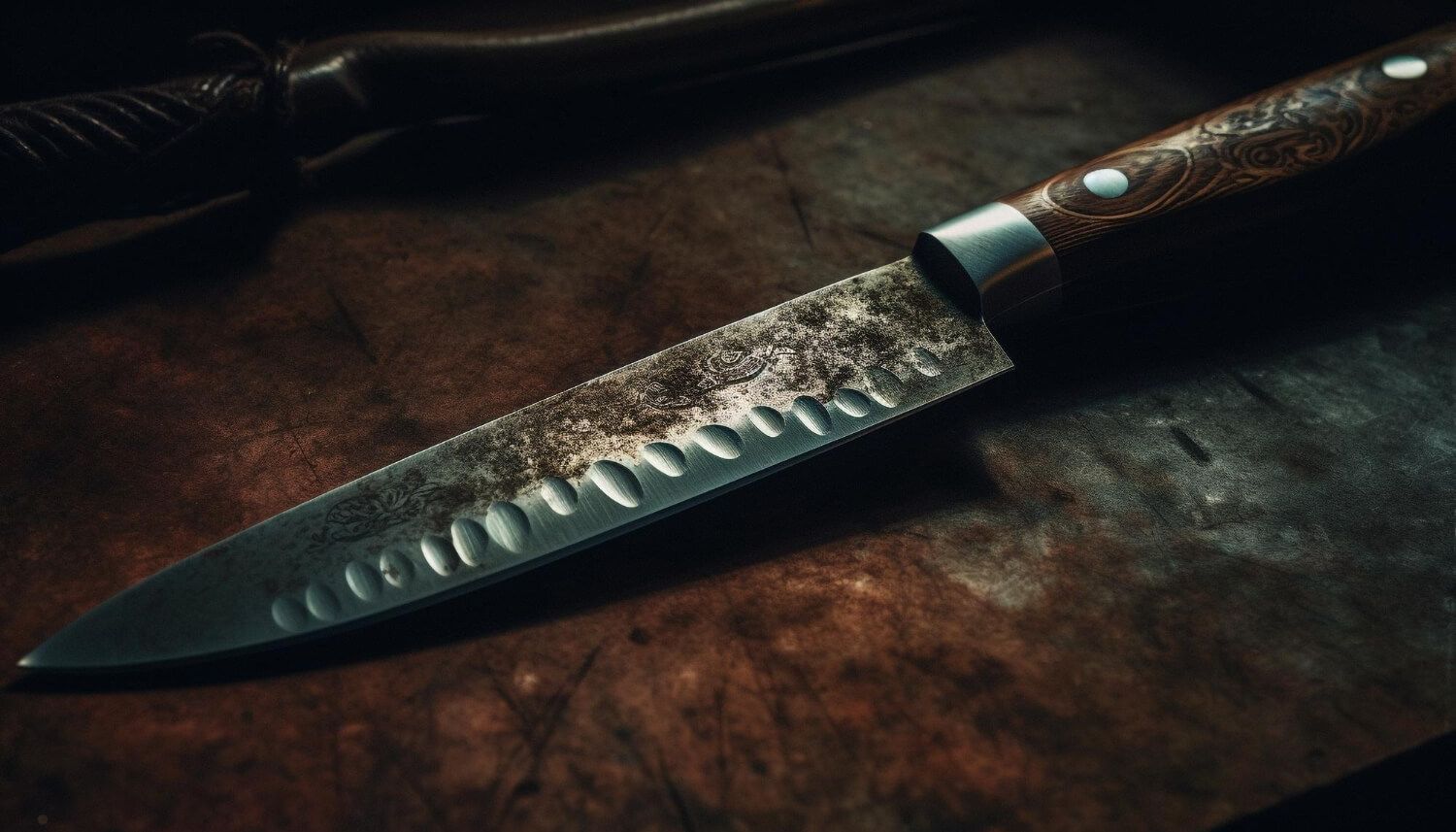The Gyuto blade, a marvel of Japanese craftsmanship, stands out for its aesthetic appeal and its unique balance between sharpness and flexibility. Originating from Japan's culinary heartlands, this blade has become a symbol of precision and versatility in kitchens worldwide.
Its popularity among amateur and professional chefs stems from its ability to handle a wide range of tasks with unparalleled ease.
The Gyuto knife's design is a harmonious blend of aesthetics and functionality, making it a sought-after tool among chefs and culinary enthusiasts worldwide.
In This Article
- The Science of Sharpness
- The Art of Flexibility
- Materials and Forging Process
- Balancing Sharpness and Flexibility
- Culinary Applications and Benefits
- Maintenance and Care
- Conclusion
- Further Reading
The Science of Sharpness
Sharpness, in the context of blades, is a measure of how well a knife can initiate a cut. The Gyuto blade's sharpness is a testament to its advanced forging techniques and the materials' quality.
But what does sharpness truly entail? It's the culmination of edge geometry, the hardness of the steel, and the finishing processes applied to the blade.
The Gyuto's edge is meticulously honed to achieve a fine apex, ensuring clean and precise cuts every time. Various sharpness tests, from paper slicing to tomato dicing, showcase the Gyuto's superior edge retention and cutting prowess.
The Art of Flexibility
Flexibility in a blade is often overlooked, but it's crucial for tasks that require finesse, like filleting a fish or deboning poultry. A blade that's too rigid can be brittle, risking breakage.
The Gyuto blade, with its unique construction, offers flexibility that's both functional and safe. This is achieved through a combination of specific steel choices, heat treatments, and blade thickness.
The result? A blade that can bend without breaking, ensuring longevity and performance. The Gyuto blade's flexibility is a testament to its advanced forging techniques and the materials' quality.
Materials and Forging Process
The choice of material plays a pivotal role in the Gyuto blade's characteristics. Damascus steel, renowned for its durability and unique wave-like patterns, is popular. This high-carbon steel undergoes a multi-layered forging process, where it's folded several times to create a sharp and flexible blade.
Each fold, each hammer strike, imbues the blade with qualities that make it stand out. The forging process is an art form, with blacksmiths spending years mastering the techniques to produce blades of unparalleled quality.
The blade's core material provides high rigidity, toughness, and durability.
Balancing Sharpness and Flexibility
Striking the right balance between sharpness and flexibility is no easy feat. It requires a deep understanding of metallurgy, a mastery of forging techniques, and an innate sense of craftsmanship.
Over the centuries, Japanese blacksmiths have refined their methods, drawing from both tradition and innovation, to produce the Gyuto blade we know today.
This balance ensures that the blade remains sharp enough to handle delicate tasks like slicing sashimi and is flexible enough to navigate around fish bones or carve meat off a joint.
Culinary Applications and Benefits
The right tool can elevate a dish from ordinary to extraordinary in the culinary world. The Gyuto blade, with its sharpness and flexibility, is that tool for many chefs. Its sharp edge allows for paper-thin slices of fish, perfect for sushi and sashimi. Its flexibility, on the other hand, makes deboning and filleting a breeze.
Beyond these, the Gyuto is versatile enough for everyday tasks, from chopping vegetables to mincing herbs. Its design ensures minimal resistance, reducing hand fatigue and enhancing the overall cooking experience.
Maintenance and Care
Like any masterpiece, the Gyuto blade requires care. Regular sharpening using whetstones ensures the blade retains its edge.
Proper cleaning, devoid of harsh chemicals, and drying before storage prevent rust and corrosion. Storing the knife in a wooden block or on a magnetic strip ensures it remains free from damage.
With proper care, a Gyuto knife can be a lifelong culinary companion, a testament to its craftsmanship and quality.
Conclusion
The Gyuto blade is a shining example of what happens when tradition meets innovation. Its unique balance of sharpness and flexibility is a testament to centuries of Japanese craftsmanship, a legacy that continues to inspire and amaze.
Whether you're a seasoned chef or a home cook, the Gyuto knife promises precision, versatility, and a touch of artistry to every culinary creation.
FAQs
What makes the Gyuto blade unique?
The Gyuto blade is renowned for its perfect balance between sharpness and flexibility, making it versatile for a wide range of culinary tasks.
How is the balance between sharpness and flexibility achieved in a Gyuto knife?
This balance is achieved through meticulous forging techniques, choice of high-quality materials, and the blade's specific design and thickness.
How do you maintain the sharpness of a Gyuto blade?
Regular sharpening using honing rods and whetstones, along with proper storage and care, ensures the blade retains its edge.
What are the culinary benefits of using a Gyuto knife?
The Gyuto knife's sharpness allows for precise cuts, while its flexibility ensures it can handle tasks like filleting fish or thinly slicing vegetables with ease.
Further Reading
- Gyuto Knife Craftsmanship: Delving into History and Techniques: Explore the rich history and intricate techniques behind the making of the renowned Gyuto knife.
- Techniques Mastery with Gyuto: A Comprehensive Guide to Cutting: Discover the best practices and techniques to make the most of your Gyuto knife in the kitchen.
- For comprehensive guidelines on knife safety, check out the article How to Use Knives Safely by Stockland.
- If you're on the hunt for the ideal Gyuto knife to add to your kitchen arsenal, don't miss our comprehensive guide on the best Gyuto knife. Dive deep into expert reviews and make an informed choice for your culinary adventures.



